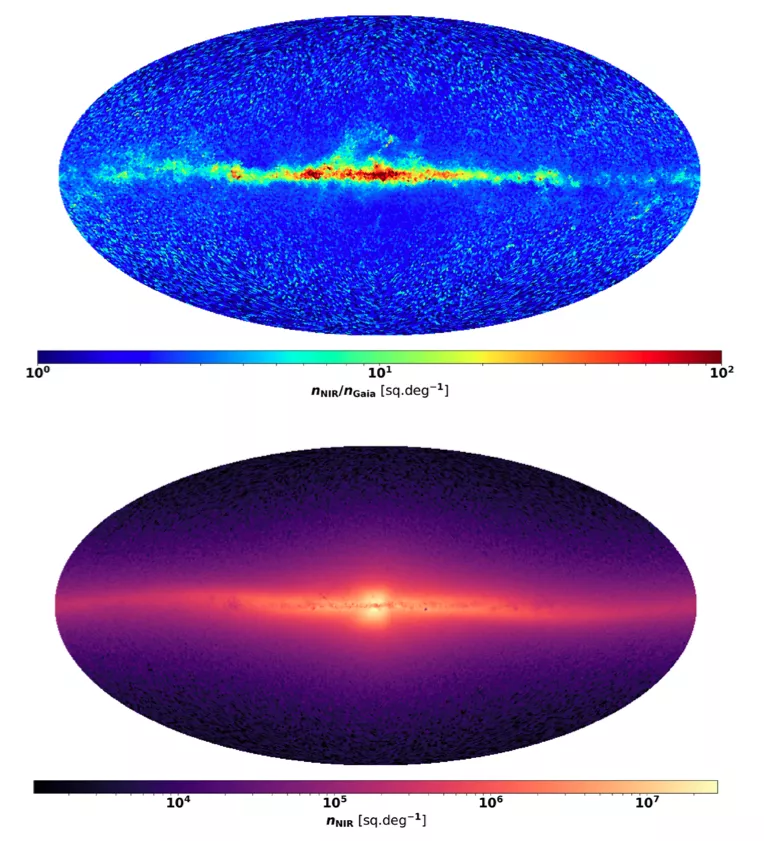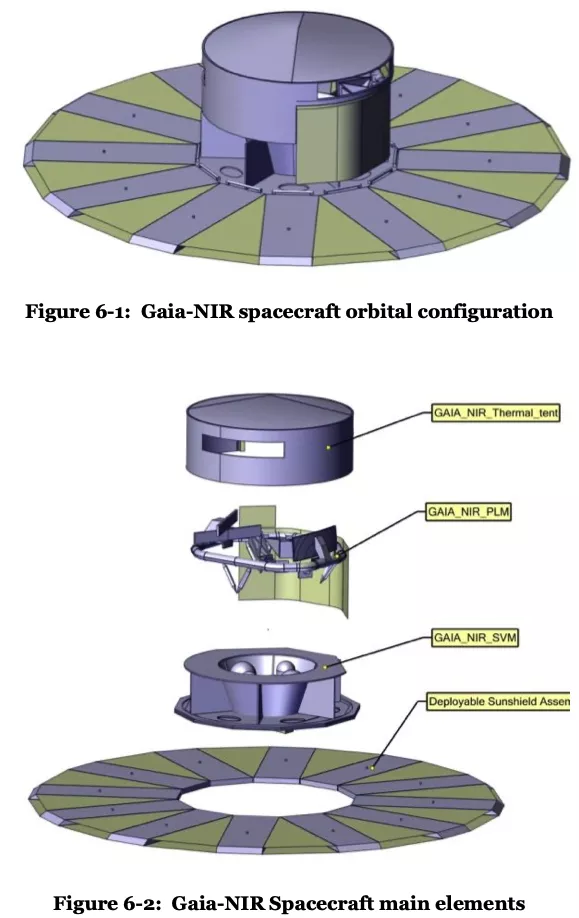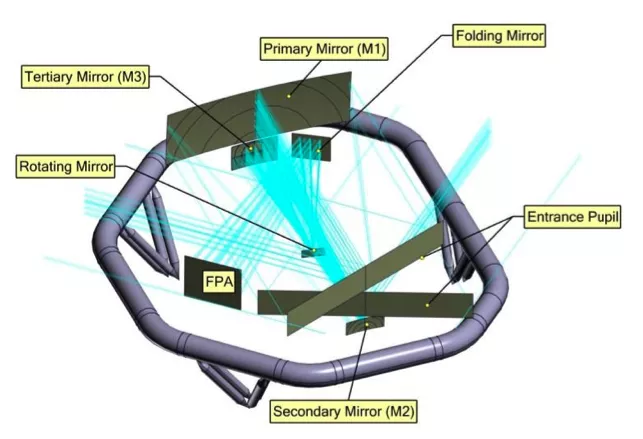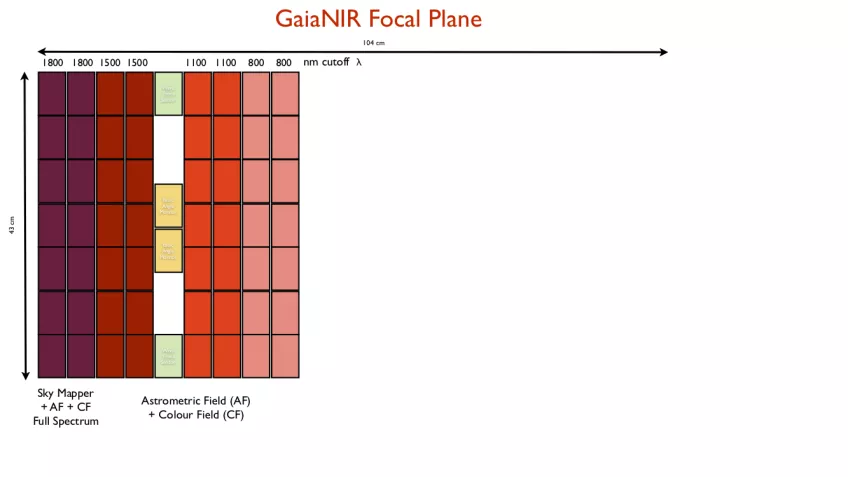Mission Design
Spacecraft
The space telescope will be based on an off-axis f=35m Korsch telescope as used for Gaia.
This design differs from Gaia's in that:
- the mirror surfaces are simple conics to simplify manufacturing, alignment and test.
- the entrance pupil is at a flat folding mirror in front of the primary instead of on the primary mirror itself.
The optical path of the telescope is composed of:
- a primary mirror
- a secondary mirror
- a tertiary mirror
- 4x flat mirrors
The flat mirrors consist of:
- two mirrors defining the Basic Angle at the entrance pupil
- a folding mirror (after the exit pupil)
- an mirror at the exit pupil (potentially a de-spin mirror if TDI mode is not used)
Detectors
The baseline detectors will be based on HgCdTe (MCT) materials which is the most promising material for NIR wavelengths. However it is not easily used in the visible so it may be necessary to also employ Si CCD technology for visible wavelengths. Additionally, conventional NIR detectors do not support Time Delayed Integration (TDI) mode needed on a rotating spacecraft to integrate the faint light of stars as they cross the focal plain. HgCdTe Avalanche Photodiodes (APDs) are a potential solution to this problem as they can be operated in a TDI like mode. Substrate removal used to make HgCdTe detectors sensitive to optical wavelengths (with reduced QE) is possible but it is not clear if this can be used together with TDI mode.
Focal Plane
The focal plane is significantly smaller than Gaia's. This is an advantage as it allows sufficient room to potentially house two different types of detectors if needed. However HgCdTe detectors work best at 80K while Si CCDs work best at 130K. This presents a technology challenge to cover the complete wavelength range from 400-2500 nm.
- Cooling strategy must be passive (~80-130K).
- Focal plane will consist of detectors with different λ cutoffs.
- Filter photometry in at lease 4-bands is dsireable, e.g. λmin = 400nm (substrate removal) and λmax= (900, 1400, 1900, 2400) nm K-band cutoff.
- No Sky Mappers to track the motion of stars instead the motion of stars will be used to determine which FoV the light comes from.
- No Spectrograph ! Ground based surveys can provide radial velocities.
Example diagram showing the relative size compared to Gaia's focal plane





